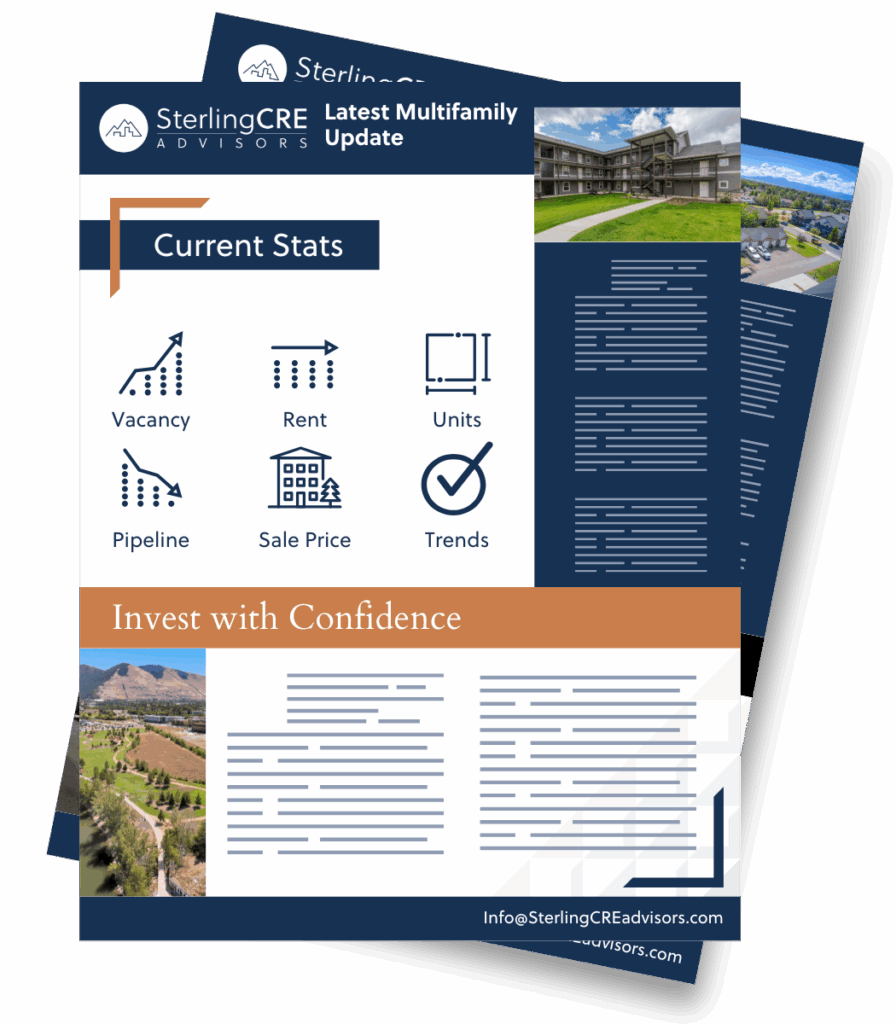What is commercial real estate and what are asset types in the CRE world?
For something that surrounds most of us everyday, there is some confusion about what commercial real estate is, and what commercial real estate advisors mean when we refer to asset classes.
By most definitions, commercial real estate is anything larger than a single family home. We include single family homes with things like ADUs on site in our distinction between commercial and residential real estate.
An asset class is simply the way we talk about the different categories of commercial real estate.
In no particular order, the categories, or asset classes, of commercial property are multifamily, office, retail, hospitality, mixed use, land, industrial and special purpose.
Multifamily
Multifamily is any housing with more than one unit on site. That’s everything from a small duplex on up to a 1000 units in a high rise.
Office
The office asset class is pretty straightforward. This is usually what people think of when they hear the term commercial real estate: buildings with a mix of things like open bullpen space, private offices, reception and conference rooms.
Retail
Retail almost always refers to brick and mortar stores that accommodate shoppers. That could be everything from a little corner bodega to large stores like Costco. Retail spaces include restaurants, salons and other service providers.
Hospitality
Hospitality is lodging like hotels and motels, and also may include inns and resorts.
Mixed Use
Mixed use is usually a mix of multifamily housing and retail or office space. One benefit of a mixed use property is no wasted parking lot space. During the day, when tenants leave for work, parking space opens up for people shopping at the retail or visiting the office spaces in the building. As those offices or stores close up for the evening, the parking is used again by tenants returning home for the day. It’s not a perfect system, but it does mean that parking lots are used to a much fuller potential.
Land
While it might seem like a more simple asset, land deals can be complex. From brownfield to greenfield, infill to rural, commercial land can require as much due diligence as a large commercial building. Understanding zoning, utilities, growth plans, development districts and other factors is important when brokering land sales.
Industrial
Industrial properties include things such as self storage, distribution warehouses and manufacturing facilities. These properties will sometimes be combined with offices for administrative duties related to the operations of the facility. But these spaces aren’t just boring warehouses. They can be used for things like film studios and airplane hangers.
Special Purpose
Finally, there are special purpose properties. That’s the phrase used to describe buildings that don’t really fit any of the other categories. An empty parking lot, a church or a stadium might fall into this category. That’s a quick overview of the commercial real estate types.
We’re all surrounded by commercial real estate every day, with offices, schools, groceries stores, and even things like zoos. Understanding what CRE is, as well as the different asset classes can help you understand broader development conversations in your community.
Contact Matt Mellott, CCIM | SIOR or Claire Matten, CCIM | SIOR for more info on Montana’s commercial real estate landscape.

